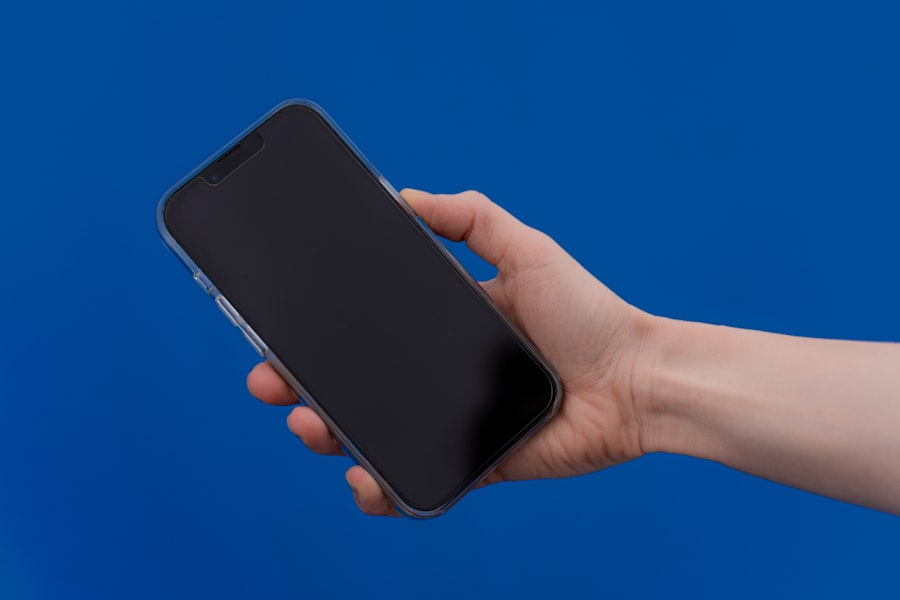In an age where smartphones have become an integral part of our daily lives, the influx of notifications can be overwhelming. Notifications serve as a double-edged sword; they keep us informed and connected but can also lead to distractions and stress. The constant pinging of alerts can fragment our attention, making it difficult to focus on tasks at hand.
This is particularly relevant in professional settings where productivity is paramount. By managing notifications effectively, individuals can create a more conducive environment for concentration and efficiency. Moreover, the psychological impact of notifications cannot be understated.
Research has shown that frequent interruptions can lead to increased anxiety and decreased overall well-being. The pressure to respond immediately to messages or alerts can create a sense of urgency that is often unwarranted. By taking control of notification settings, users can cultivate a healthier relationship with their devices, allowing for periods of uninterrupted focus and reducing the mental clutter that comes with constant connectivity.
This proactive approach not only enhances productivity but also contributes to a more balanced lifestyle.
Key Takeaways
- Managing notifications is important for maintaining focus and reducing distractions
- To hide alerts on iPhone, go to Settings, then Notifications, and select the app to customize alert settings
- Customizing notification settings allows you to control how and when you receive alerts
- Managing app-specific notifications helps prioritize important alerts and minimize unnecessary ones
- Using Do Not Disturb mode and setting up quiet hours can help create uninterrupted periods for focus and relaxation
How to Hide Alerts on iPhone
Hiding alerts on an iPhone is a straightforward process that can significantly reduce the number of distractions one faces throughout the day. To begin, users can navigate to the Settings app, where they will find the Notifications section. Within this menu, each app is listed, allowing for tailored adjustments.
For instance, if a user finds that social media notifications are particularly distracting, they can select the respective app and toggle off the “Allow Notifications” option. This action will prevent any alerts from appearing on the lock screen or as banners while using the device. In addition to disabling notifications entirely, users have the option to customize how alerts are displayed.
For example, one can choose to hide alerts from specific apps while still allowing notifications from others that may be deemed more important. This selective approach enables users to maintain essential communication channels while minimizing interruptions from less critical sources. Furthermore, users can also opt to hide notification previews, ensuring that sensitive information remains private even when alerts are received.
Customizing Notification Settings

Customizing notification settings is essential for creating a personalized user experience on an iPhone. Each app offers various options that allow users to tailor how and when they receive alerts. For instance, within the Notifications menu, users can choose between different alert styles: banners, alerts, or badges.
Banners appear briefly at the top of the screen, while alerts require user interaction to dismiss them. Badges, on the other hand, display a small red dot on the app icon, indicating unread notifications. Additionally, users can decide whether they want sounds or vibrations accompanying their notifications.
For those who prefer a quieter experience, turning off sound notifications can be beneficial. This feature is particularly useful in professional environments or during meetings where silence is expected. Furthermore, users can set specific times for notifications to be silenced or adjusted based on their daily routines, ensuring that they remain in control of their digital interactions.
Managing App-Specific Notifications
| App Name | Number of Notifications | Notification Types | Engagement Rate |
|---|---|---|---|
| App A | 150 | Push, In-App | 25% |
| App B | 200 | Push, Email | 30% |
| App C | 100 | Push, SMS | 20% |
Managing app-specific notifications allows users to fine-tune their alert preferences based on individual needs and priorities. For example, messaging apps like WhatsApp or iMessage may require immediate attention due to their nature of facilitating real-time communication. Users can enable sound alerts and banners for these applications while opting for a more muted approach with less critical apps like news aggregators or promotional emails.
Moreover, many apps now offer granular notification settings that allow users to choose which types of alerts they wish to receive. For instance, within a social media app, one might want to receive notifications for direct messages but not for likes or comments on posts. This level of customization ensures that users are only alerted about matters that truly require their attention, thereby reducing unnecessary distractions and enhancing overall productivity.
Using Do Not Disturb Mode
Do Not Disturb mode is a powerful feature available on iPhones that allows users to silence all incoming notifications temporarily. This mode is particularly useful during meetings, study sessions, or any time when uninterrupted focus is required. To activate Do Not Disturb, users can either access the Control Center by swiping down from the top right corner of the screen or navigate through the Settings app.
Once activated, all calls and notifications will be silenced until the mode is turned off. One of the standout features of Do Not Disturb mode is its ability to allow exceptions for specific contacts or apps. Users can customize their settings so that calls from important contacts—such as family members or work colleagues—can still come through even when Do Not Disturb is enabled.
This ensures that while distractions are minimized, critical communications are not missed. Additionally, users can schedule Do Not Disturb mode to activate automatically during certain hours, such as during nighttime or work hours, further enhancing its utility.
Setting up Quiet Hours

Setting up Quiet Hours is an effective way to manage notifications during specific times of the day when focus or rest is paramount. This feature allows users to designate periods during which notifications are silenced automatically. For instance, many individuals find it beneficial to establish Quiet Hours during late-night hours when they are winding down for sleep or early morning hours when they prefer not to be disturbed.
To set up Quiet Hours on an iPhone, users can navigate to the Do Not Disturb settings and select “Scheduled.” Here, they can specify start and end times for their Quiet Hours. During this period, all notifications will be muted unless exceptions have been set for certain contacts or apps. This feature not only helps in maintaining a peaceful environment but also encourages healthier habits by promoting designated times for rest and relaxation away from digital distractions.
Managing Group Notifications
Group notifications can often become a source of frustration due to their volume and frequency. In messaging apps like WhatsApp or group chats in iMessage, users may find themselves inundated with alerts every time someone sends a message. To manage these group notifications effectively, users have several options at their disposal.
One approach is to mute group chats temporarily or permanently, which prevents notifications from appearing while still allowing access to the conversation when needed. Additionally, many messaging platforms offer settings that allow users to customize how they receive notifications from group chats. For example, one might choose to receive only mentions or replies rather than every message sent within the group.
This selective approach helps in reducing notification fatigue while still keeping users informed about important interactions within their groups.
Tips for Maintaining a Clutter-Free Notification Center
Maintaining a clutter-free Notification Center is essential for enhancing productivity and reducing distractions on an iPhone. One effective strategy is regularly reviewing and adjusting notification settings for each app based on current needs and priorities. As life circumstances change—such as starting a new job or moving—so too should notification preferences evolve accordingly.
Another useful tip is to utilize the “Clear All” option in the Notification Center regularly. This feature allows users to quickly dismiss all notifications at once rather than individually clearing them out one by one. Additionally, organizing apps into folders based on their importance can help streamline access and reduce visual clutter in both the home screen and Notification Center.
Furthermore, users should consider limiting the number of apps that send notifications in the first place. By uninstalling or disabling notifications for apps that are rarely used or deemed unnecessary, individuals can significantly reduce the volume of alerts they receive daily. This proactive approach not only declutters the Notification Center but also fosters a more focused and intentional use of technology in everyday life.
By implementing these strategies and understanding the importance of managing notifications effectively, users can create a more balanced relationship with their devices while enhancing productivity and well-being in an increasingly connected world.
If you are looking to troubleshoot issues with sending pictures on your iPhone, you may find this article on troubleshooting iPhone picture sending issues helpful. It provides tips and solutions to common problems that may arise when trying to send photos from your device. Additionally, if you have a broken iPhone and need to retrieve pictures from it, you can check out this article on how to retrieve pictures from a broken iPhone for step-by-step instructions on how to recover your photos.










